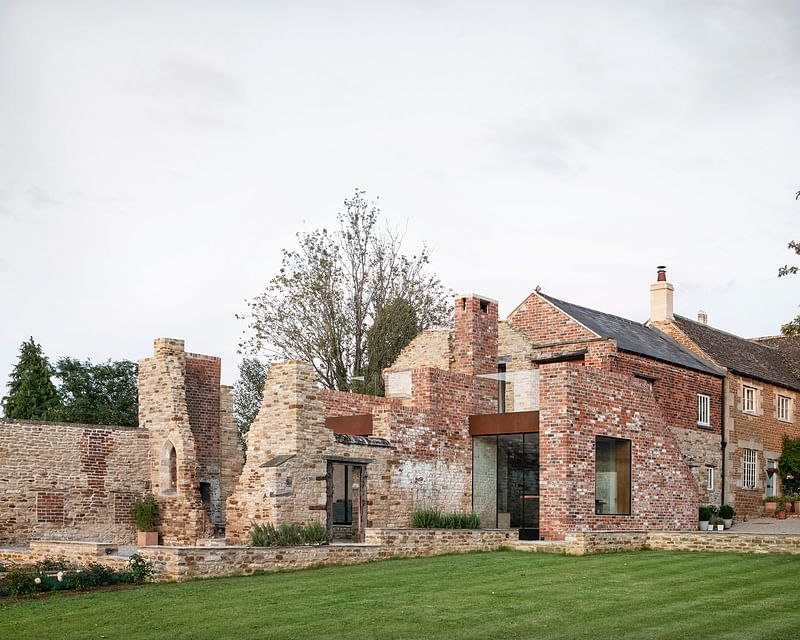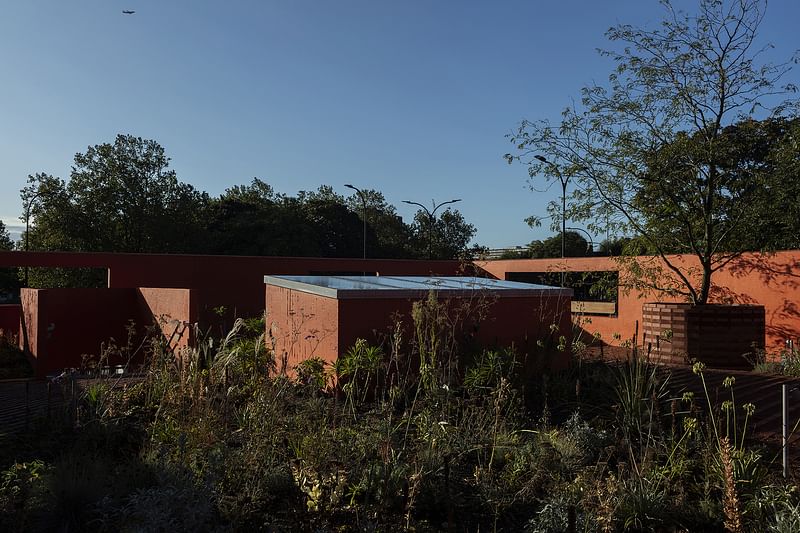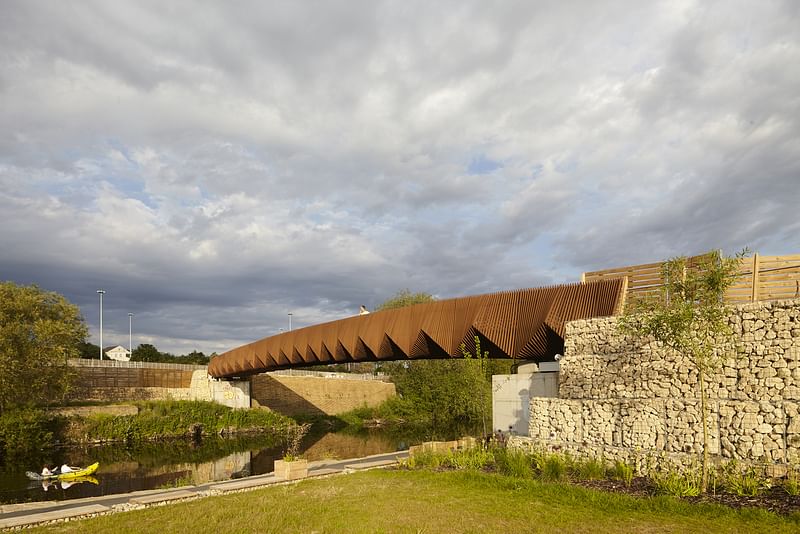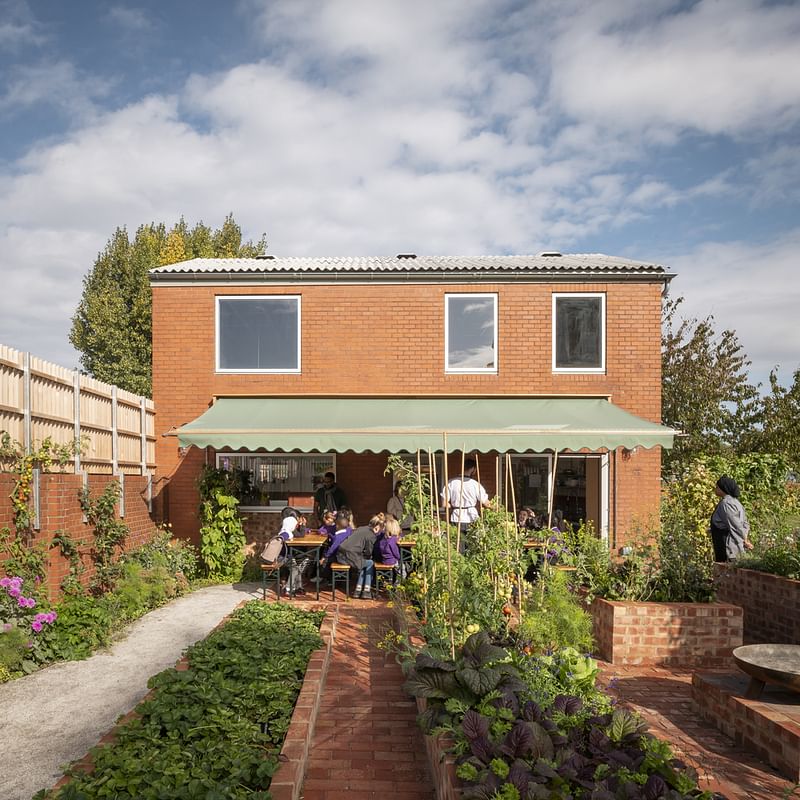Seven small projects shortlisted for 2022 RIBA Stephen Lawrence Prize
By Josh Niland|
Thursday, Jul 21, 2022

Related
As the organization awaits the results of its presidential election next week, the Royal Institute of British Architects (RIBA) has today announced the shortlist for the coveted annual Stephen Lawrence Prize featuring a slate of seven unique projects executed with a budget under £1 million ($1.2 million).
The award recognizes the legacy and memory of Stephen Lawrence, a teenager aspiring to become an architect, who was tragically slain in a racist incident near his home in South London in April 1993.
Matthew Goldschmied, the son of the award’s late founder and the Chair for this year’s competition, said he was honored to step into the role and that “as a jury, we were seriously encouraged by the climate-conscious ethos that underpins so many of these small projects.”
“From those that prioritize the re-use and adaptation of existing buildings and historic structures, to those that experiment with materials and technologies to meet low-carbon ambitions,” he added. “My father launched this prize in 1998 with the intention of rewarding new architectural talent, and it has since evolved into a celebration of schemes that show the possibilities of innovative design on modest budgets.”
Scroll down to see more details of the full group of shortlisted projects.
The Parchment Works by Will Gamble Architects (East Midlands)

Jury comments: "Parchment Works is a delightful extension to a grade II listed double-fronted Victorian house. The formal street frontage gives no clues to a garden extension that is full of surprises, with indoor and outdoor rooms that enjoy the tectonic richness of the ruined walls of an historic parchment factory and designated scheduled monument. The architect was persuasive in bringing both client and conservation officer on side with the idea of keeping the ruin and the bones of a cattle shed attached to the house. Living rooms and a bedroom above are discretely inserted inside the ruined walls as a lightweight skin, leaving the massive stone and brick walls to dominate the external expression. Of particular note, is the elegance of detailed resolution of material junctions in all places where new and old meet. The complexity of the conservation narrative was clearly a huge challenge, yet there is a clarity of expression and a pragmatism in making useful and durable details that clearly express the layering of new and old, contrasting the undulating lines of vernacular, historic construction with the straight, orthogonal lines of the new."
Surbiton Springs by Surman Weston (London)

Jury comments: "The house successfully blends vernacular mock-Tudor and industrial aesthetics into a unique and appropriate hybrid. With its traditional A-frame elevation the house borrows the language of the suburban mock-Tudor, ubiquitous to its locality, and turns it on its head by expressing it in a steel frame –the materiality of modernity. Unusually, the structure is designed to be exoskeletal, expressing the pitched form diagrammatically, as if it were drawn by a child. The judges were particularly impressed with the clarity of the conceptual approach. The industrial materials have been handled with restraint to provide a calm and sophisticated set of domestic spaces, all of this achieved within a modest budget."
Ravine House by Chiles Evans + Care Architects (East Midlands)

Jury comments: "The jury panel enjoyed the painstaking research into restoring or replacing appropriate door handles and light fittings, carefully restored wardrobes and ceilings in Parana pine, and the discovery of a scrap of original Wilton carpet that was analysed and re-woven for the bedroom wing. Faced with adding a new ‘garden’ room to the tour de force of the original design, the architects have risen to the challenge brilliantly, with one of the most enjoyable spaces in the house, creating a snug set down into the garden that looks over the mature designed landscape all around. This new room sits easily into the copper-clad angles and undulating glazed bays of the original design, with a coherence that reflects a deep understanding of the construction and architectural intent of the trailblazing design. This is a house that integrates sustainable practice with restoration and renewal as an exemplar of how an architect can approach their brief with both respect and invention. The jury are delighted to give this project a regional award."
Peveril Gardens and Studios by Sanchez Benton Architects (London)

Jury comments: "The project showcases the ambition of the design team and the vision of the client to see the potential for the retrofit of this unloved brutalist structure for wider cultural benefit. In addition to using an air-source heat pump, the building achieves significant embodied carbon savings through reuse rather than rebuild. The choice of materials, reuse of the original garage features and finish creates a light, characterful and joyful set of inside and outside spaces for a wide variety of adaptable uses."
Leyton House by McMahon Architecture (London)

Jury comments: "The creative design response to the planners’ requests has endured through to completion. The setback at the first-floor level helps with scale on the street but also brings light into the plan. Contextually, the choice of brick at street level and timber above, at window openings and chimney termination detail, all sit together as a coherent and robust ensemble. The architect has been able to push the boundaries of the clients’ expectations of what was possible on the site. The resulting solution is imaginative and multi-layered, tackling matters to do with overlooking and privacy, without detriment to internal lightlevels and views."
Leeds Footbridge by Gagarin Studio (with DP Squared, Yorkshire)

Jury comments: "A pedestrian footbridge bridge is a very much a three-dimensional object, which needs to be carefully detailed, particularly when it passes over an existing towpath, allowing views directly to its underside. The Architects andEngineers have handled this with aplomb, exposing the structural ribs of the deck soffit which in turn co-ordinate with the chamfered deck edge and the enveloping balustrade. The result is an honest and pleasing structure which is as satisfying when viewed from beneath as it is from the riverbank. The clients, aspirations of creating a new sustainable and low energy district of the city, is now being realised, with homes and workspace occupied and more under construction. The Leeds footbridge is an integral part of this vision. Through its imaginative design and quality of fabrication, the team have not only re-enforced this vision but dramatically enhanced it."
Hackney School of Food by Surman Weston (London)

Jury comments: "The architectural response to the client’s brief is underpinned by a strong and distinctive design philosophy, driven by an ethos of maximizing educational impact. The school keeper’s house and garage have been transformed incredibly imaginatively, adapting the existing building fabric distinctly and honestly, with a carefully considered and controlled set of unifying materials. The value for money of each and every move has been fully interrogated. This is no small feat on the architect’s part, who has shown dexterity and risen to the challenge by retaining and removing key elements on site and then stitching everything back together in thoughtful and economic ways."

Share
0 Comments
Comment as :